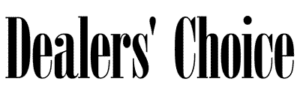Helping your customers pay off loans and reduce negative equity faster brings them back to your store sooner.
In today’s market, we’re facing headwinds. Interest rates are significantly higher than last year, driving monthly payments to all-time highs. Inflation and increasing interest rates mean vehicles are becoming less affordable for consumers. Add additional economic factors, including overall consumer inflation — particularly with food, utilities and gas — and you have tight household budgets.
How are you tackling the growing problem of affordability? In today’s world of customer-centric sales, payments need to fit how customers get paid and budget to make vehicles and protection products more affordable.
How Consumers Get Paid Don’t Match Traditional Monthly Car Payments
According to the Bureau of Labor Statistics, 95% of Americans are paid weekly, biweekly or semimonthly. Only 5% of customers are getting paid and budgeting on a monthly basis. Even more problematic, up to 70% of Americans are living paycheck to paycheck.
That means most Americans have a tough time fitting a large monthly payment into their weekly or biweekly pay cycles and budgets. This is especially true with higher vehicle prices and increasing interest rates. Monthly vehicle payments are already higher than most Americans can afford. That alone will keep people in their existing vehicles longer — and out of the market for new vehicles.
Easy Fix: Offer Payments That Fit How Customers Are Paid
A simple solution is to offer lower, easier payments that fit how your customers get paid. With an average monthly new car payment hovering around $777 and an average used car payment of $545, those payments are out of range for most Americans. Yet if you broke down those new car payments to a $389 biweekly or an even more manageable $195 weekly payment, customers could afford the vehicle, along with F&I products.
Just as important to dealers and agents, lower and easier payments help customers afford more protection products. Data from thousands of dealers spanning more than five years clearly proves customers buy one and a half times more products — and dealers generate an average of $1,100 more with each deal — when customers choose lower and easier weekly or biweekly payments. Also, the data shows that dealers find 40-60% of their finance customers choose lower and easier payments.
Faster Payoffs Mean Quicker Trades
What’s more, dealers can help customers pay off loans faster with lower and easier biweekly and weekly payments. Average loan terms have grown to 72 months — and some lenders are extending to 78 and 84 months. This means more customers are upside down for the first three or four years of their loan. The most recent data available show that 44% of all trades have an average negative equity of $5,600. This further reduces customers’ ability to trade.
In a few years, when inflation is under control, inventory problems are resolved, and the economy is in better shape, it would be nice to have today’s customers in better equity positions and ready to trade. Helping your customers pay off loans and reduce negative equity faster brings them back to your store sooner.
David Engelman is the CEO of SMARTPAY, which gives car dealers a way to offer lower and easier payments that match how their customers get paid and budget — so they can afford more protection products, repay loans faster and purchase new vehicles sooner.










